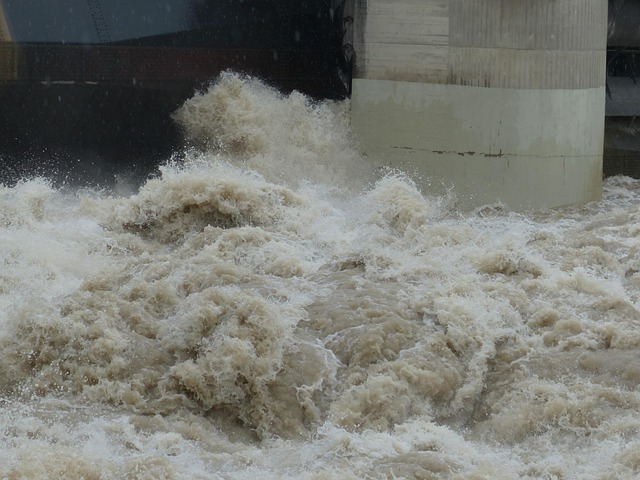After a Denver flood, swift action is vital to prevent mold growth. Inspect for water damage, remove saturated materials, and ensure proper ventilation. For extensive flooding, hire professionals with advanced equipment for efficient water removal and mold remediation. Disinfect with bleach or EPA-approved cleaners. Promptly repair leaks and seal moisture intrusions. Professional Water Damage Restoration services offer specialized gear and techniques for safe and comprehensive Denver Flood Cleanup.
After a Denver flood, quick action is crucial to prevent mold growth. This comprehensive guide helps you navigate the post-flood landscape and ensure a safe, healthy home. First, assess flood damage to identify immediate mold risks. Then, learn how to thoroughly dry out areas and address structural issues to stem moisture that encourages mold. We provide tips for cleaning, disinfecting, and when to seek professional help for effective Denver flood cleanup.
- Assess Flood Damage: Identify Mold Risks Immediately
- Dry Out Areas Thoroughly: Prevent Moisture Harboring Mold
- Clean and Disinfect Surfaces: Eliminate Existing Mold
- Address Structural Issues: Fix Leaks to Prevent Recurrence
- Consider Professional Help: Ensure Comprehensive Mold Removal
Assess Flood Damage: Identify Mold Risks Immediately
After a flood in Denver, assessing the damage is the first step in preventing mold growth. It’s crucial to identify areas at high risk for mold development immediately following the cleanup process. Look for water stains, peeling paint, or any signs of water intrusion, as these can all indicate potential problems. Pay special attention to basements, attics, and crawl spaces—common spots where moisture can accumulate and foster mold growth.
In the initial stages of Denver flood cleanup, addressing these areas is critical. Remove saturated materials like drywall, insulation, and carpeting, as they cannot be effectively dried and may contribute to a breeding ground for mold. Ensure proper ventilation and consider professional help for extensive damage or where biohazard cleanup is required in Denver. Prompt action can prevent not just mold but also the health risks associated with its presence in restored flooded homes.
Dry Out Areas Thoroughly: Prevent Moisture Harboring Mold
After Denver floods, thoroughly drying out affected areas is paramount to prevent moisture from harboring mold growth. Mold thrives in damp environments, so swift and complete dehydration is crucial. Local flood cleanup teams often employ advanced equipment like dehumidifiers and air movers to expedite this process. It’s important to ensure every nook and cranny is dried, as even small pockets of moisture can foster mold development.
To effectively prevent mold in flooded areas, residents should allow professionals to guide the drying out after a flood. Ignoring this step or using inadequate methods can leave behind hidden moisture, creating an ideal breeding ground for mold. Prompt action by local flood cleanup teams ensures not only the safety and health of your home but also prevents costly repairs down the line due to extensive mold damage.
Clean and Disinfect Surfaces: Eliminate Existing Mold

After a Denver flood, one of the first steps in the cleanup process is to thoroughly clean and disinfect all surfaces. This involves removing any visible water and moisture immediately, as standing water can accelerate mold growth. Use hot, soapy water to scrub surfaces like walls, floors, and furniture. For hard-to-reach areas or severe cases, consider hiring Denver flood cleanup specialists who offer emergency water removal services. They are equipped with the necessary tools and expertise to tackle large-scale mold removal effectively.
Remember that mold can hide in various places—from behind drywall to inside cabinets. To ensure a comprehensive clean, pay special attention to areas with high moisture content or where water may have seeped. Crime Scene Cleanup Denver professionals recommend using disinfectants like bleach or EPA-approved fungicidal cleaners to kill existing mold spores and prevent future growth. By combining thorough cleaning and disinfection, you can mitigate the potential health risks associated with mold and ensure a safer environment post-Denver flood cleanup.
Address Structural Issues: Fix Leaks to Prevent Recurrence

After a flood, addressing structural issues is a crucial step in preventing mold growth during Denver’s post-flood recovery. The first step involves identifying and fixing any leaks or moisture intrusions that could lead to future water damage. This includes repairing or replacing damaged roofs, windows, doors, or pipes. It’s essential to ensure these areas are sealed properly to prevent water from seeping into the home again.
A flooded basement cleanup guide suggests focusing on comprehensive repairs to create a dry and safe environment. By fixing leaks promptly, you minimize the risk of water-related damage and create a healthier space for restoration. Remember, professional Water Damage Restoration Denver services can provide expert assistance in identifying and addressing these issues, ensuring your home is thoroughly dried and protected from potential mold growth after heavy rains.
Consider Professional Help: Ensure Comprehensive Mold Removal

After a flood in Denver, it’s crucial to act swiftly to prevent mold growth. While DIY methods can be initially appealing for Denver flood cleanup, professional assistance is often required for comprehensive and safe mold removal, especially following extensive water damage. Engaging experts like those specializing in biohazard cleanup Denver ensures that every trace of mold, including hidden spores, is eliminated effectively.
Professional teams are equipped with specialized gear and advanced techniques to restore your home to its pre-flood state. They understand the intricacies of restoring flooded homes Denver, knowing that prompt action is vital to mitigating health risks associated with mold exposure. Moreover, these professionals handle potentially hazardous materials and situations, such as those encountered in crime scene cleanup Denver, ensuring a safe environment for residents during the restoration process.
After a Denver flood, prompt action is key to preventing mold growth. By thoroughly drying out affected areas, cleaning and disinfecting surfaces, addressing structural issues like leaks, and considering professional help if necessary, you can effectively mitigate mold risks associated with flood cleanup. Remember, early intervention is crucial in the Denver climate to avoid costly and health-hazardous mold infestations. For comprehensive Denver flood cleanup, follow these steps to ensure a safe and healthy environment.
